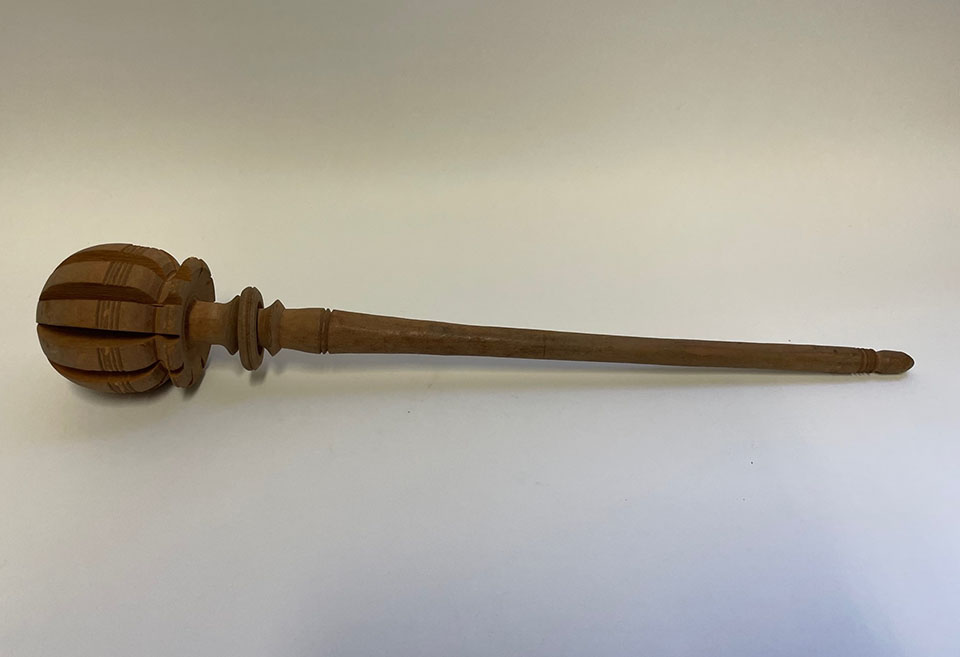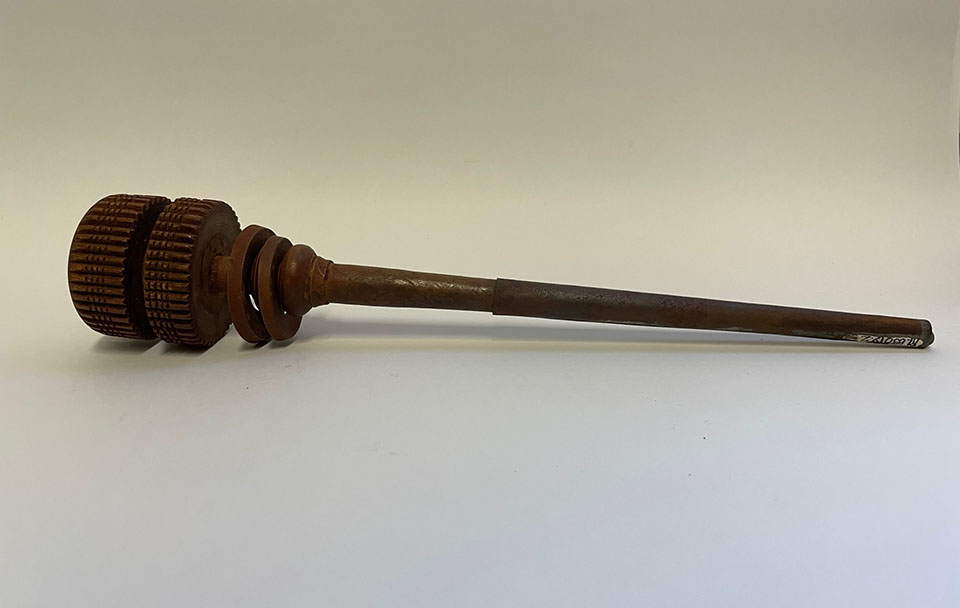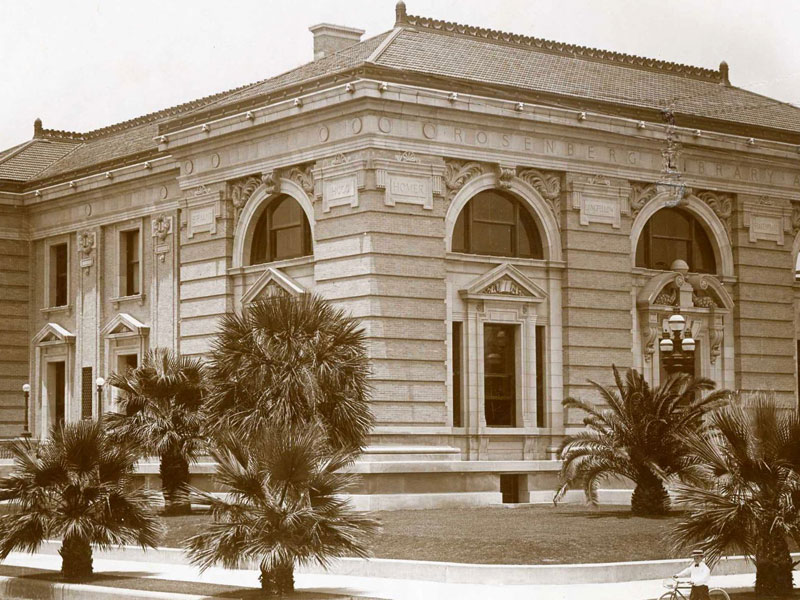Molinillos
Rosenberg Treasure of the Month
During the month of November, the Rosenberg Library is displaying molinillos, which people have used to make chocolate for hundreds of years.

| Molinillos | Rosenberg Library and Museum |
Spanish
Bate, bate, chocolate,
tu nariz de cacahuate.
Uno, dos, tres, CHO!
Uno, dos, tres, CO!
Uno, dos, tres, LA!
Uno, dos, tres, TE!
Chocolate, chocolate!
Bate, bate, chocolate!
Bate, bate, bate, bate,
Bate, bate, CHOCOLATE!
English
Stir, stir, chocolate,
your nose is a peanut.
One, two, three, CHO!
One, two, three, CO!
One, two, three, LA!
One, two, three, TE!
Chocolate, chocolate!
Stir, stir, the chocolate!
Stir, stir, stir, stir,
Stir, stir, CHOCOLATE!
Have you heard this children’s nursery rhyme before? While there are many different versions, this one describes the process of stirring hot chocolate with a molinillo, which is a carved wooden whisk used in Mexico and the Philippines. November’s Treasure of the Month features two molinillos donated to the Rosenberg Library Museum (Molinillo, 83.019.1; Molinillo, 83.019.2).

| Molinillos | Rosenberg Library and Museum |
To use a molinillo, one holds the narrow end between their palms and rotates it by rubbing their palms together. The rotating motion of the molinillo agitates the hot chocolate, mixing it and creating a frothy texture.
The origins of the molinillo are closely tied to the history of chocolate. Cacao, the bean that chocolate is made from, is native to Central and South America, where it was used as a form of currency by the Mayan and Aztec civilizations. They produced many forms of chocolate including chocolate drinks, which were typically served cold and mixed with a variety of spices including chile, cinnamon, and vanilla.
When the Spanish colonized Mexico in 1519, they co-opted much of the infrastructure and culture of Mayan civilization. Specifically, they began drinking chocolate, which was frequently served in social settings. Spanish colonists liked chocolate so much that they brought it back with them to Europe, where it became incredibly popular, over a century before the widespread consumption of coffee or tea.
Chocolate evolved with its arrival in Europe. While there is a myth that Europeans did not like the bitterness of chocolate and changed it to make it taste better, the truth is that Europeans enjoyed chocolate and were simply limited by the spices they had available to them. Many spices used by the Mayans and Aztecs were too expensive to have imported to Europe, so Europeans substituted other ingredients. Cinnamon and vanilla remained, but chiles were removed. Sugar was substituted for honey, which was sometimes used as a sweetener in traditional chocolate drinks. The serving temperature of chocolate also shifted from cold to hot, likely because heat made it easier for the fats in chocolate to mix with water.
In 17th century Europe, drinking chocolate was reserved for only the wealthy. By the mid-18th century, however, goods became cheaper and more widely available, making chocolate accessible to the middle class. Preparing chocolate and coffee drinks became a way for middle-class Europeans to flaunt their social status and even surpass the upper class, with the invention of a variety of extra serving utensils and accessories designed to enhance the beverage drinking experience. The molinillo was possibly invented around this time as an alternative to the traditional method of frothing chocolate by pouring it back and forth between two pots at a great height.
While the age of the two molinillos in our collection is unknown, it is likely they were purchased in Mexico as souvenirs. Molinillos are still used today, and there are many resources online for making and mixing your own hot chocolate!
The Treasure of the Month is located on the library’s historic second floor near the East Entrance. It can be viewed during regular library hours, 9:00 a.m. to 5:45 p.m. Monday through Saturday and from 9:00 a.m. – 8:45 p.m. on Tuesdays and Thursdays. For more information, please contact Ivy Albright, Museum Curator at 409.763.8854 Ext. 125 or at museum@rosenberg-library.org.
We'll Get You Hooked Up!
We'll Get You Hooked Up!
Rosenberg Library
Rosenberg Library has offered over a century of community service to the Galveston area, and is the oldest public library in Texas in continuous operation. The building itself was dedicated on June 22, 1904, the birthday of its patron, Henry Rosenberg. The Moody Memorial Wing opened in 1971, more than doubling the floor space and allowing for a children’s library, a history center, several galleries to showcase museum collections, and later, a computer lab. The Library accepted its first museum piece shortly after it opened in 1904. Since then, thousands of rare and interesting objects from around the world have been added to the collection. Each month they display a “Treasure of the Month”. Learn more by visiting the Rosenberg Library page and the Gifts of Henry Rosenberg section.





